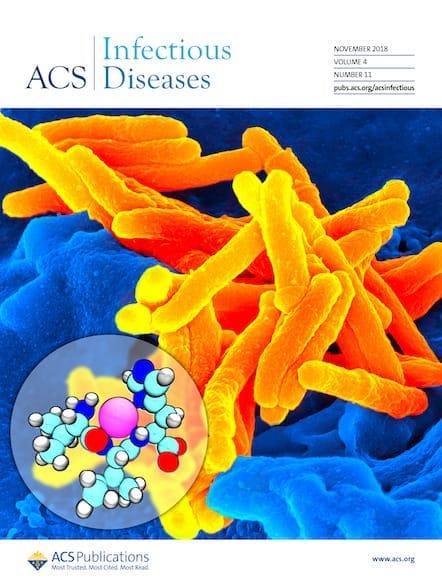Viruslike polymer nanoparticles can target and kill different types of bacteria—including antibiotic-resistant strains—while sparing human cells, according to a new study. What’s more, fine-tuning the size and shape of these fuzzy polymer nanoparticles alters their potency. The strategy could represent a step towards a new class of antimicrobials that could fight infections while avoiding antibiotic […]

Viruslike polymer nanoparticles can target and kill different types of bacteria—including antibiotic-resistant strains—while sparing human cells, according to a new study. What’s more, fine-tuning the size and shape of these fuzzy polymer nanoparticles alters their potency. The strategy could represent a step towards a new class of antimicrobials that could fight infections while avoiding antibiotic resistance.
The rise of antibiotic-resistant superbugs has become a serious health issue. Conventional antibiotics employ several bacteria-killing strategies, such as interfering with cell wall construction, attacking protein synthesis, or messing with DNA replication. But the bugs can develop resistance by chemically altering the drugs, mutating their targets, or pumping drugs out of the cell.
So scientists have been trying to develop antimicrobials that avoid these resistance mechanisms and physically rip apart bacteria. Many are working with naturally occurring bacteria-fighting peptides. These positively charged, amphiphilic peptides bind tightly to negatively charged lipid molecules to rupture membranes and break apart the cell. Some researchers have tried to make antimicrobial nanoparticles out of the peptides, while others have synthesized peptide-mimicking polymers. But the hydrophobic parts of such peptides can also disrupt the membranes of mammalian cells, which limits their potential as new antibiotics.
Hongjun Liang of Texas Tech University thought that bacteriophages might offer some strategies that could make antimicrobial peptides more selective. These viruses with hairy surfaces target specific bacteria and penetrate the cells to infect them. “We were curious what role the phage nanostructures play,” Liang says.
The researchers made three different fuzzy polymer nanoparticles that mimic bacteriophages: an 8-nm-wide sphere, and two 7-nm-wide rod-shaped particles that were 18 nm and 70 nm long, respectively. They built particles containing a polymer core with hundreds of bristles composed of positively charged, hydrophilic poly(4-vinyl-N-methylpyridinium iodide) sticking out. By using only hydrophilic bristles, the team hoped to avoid the antimicrobial peptides’ toxicity to mammalian cells.
[+]Enlarge
Escherichia coli cells (left) incubated with rod-shaped nanoparticles (middle) are damaged less than those exposed to spherical nanoparticles (right). Credit: ACS Infect. Dis.
The team tested the fuzzy particles’ antibiotic potency on Gram-negative Escherichia coli bacteria, Gram-positive Staphylococcus aureus, and various multidrug-resistant bacteria, as well as the particles’ toxicity to human cells.
The spherical particles worked best, killing over 99.9% of both Gram-positive and negative bacteria. It showed remarkable potency against multidrug-resistant Pseudomonas aeruginosa bacteria, requiring just 2 µg/ml to take out these microbes.
The longer particles showed lower antibacterial activity. However, they were more deadly to Gram-negative bacteria than to Gram-positive ones. That’s because the peptidoglycan layer that encapsulates Gram-positive bacteria is thick and has 5- to 50-nm-diameter pores that longer rods cannot cross. But rods can damage the thin, outer lipid membrane of Gram-negative bacteria. “So we can tune antibiotic activity just by changing the nanostructure’s size and shape,” Liang says.
Unlike antimicrobial peptides or their synthetic mimics, these polymer particles are not lethal to human cells. That’s because the particles rely on the shapes of lipids within the cell membrane to inflict damage. Bacterial membranes are rich in phosphoethanolamine lipids, which have an intrinsic curve, so these molecules easily bend and wrap around the tiny nanoparticle bristles, straining the membrane and causing the cell to burst. Meanwhile, human cells are primarily made of flat phosphocholine lipids. The particles can’t rupture those more rigid membranes because changing their shape would cost too much energy.
This is an exciting new approach to antimicrobials, says Jacinta C. Conrad of the University of Houston. Instead of tinkering with chemical toxicity, the researchers have mimicked the natural structure of viruses and demonstrated a potent, selective antimicrobial.
“This could be the critical new tool needed to fight drug-resistant bacteria, which may not be killed by other means,” she says. “Moreover, because these materials attack certain kinds of bacteria and not others, they may be less disruptive to bacteria in the human microbiome, which are often targeted by conventional antibiotics.”
Right now these particles are “far from meeting practical clinical standards,” Liang cautions. He says his team will have to go back and design nanostructures made of polymers that are more biocompatible and biodegradable. “We should go back to the drawing board and come up with something that has a good chance of passing rigorous safety tests.”
This article is reproduced with permission from C&EN (© American Chemical Society). The article was first published on August 24, 2017.
